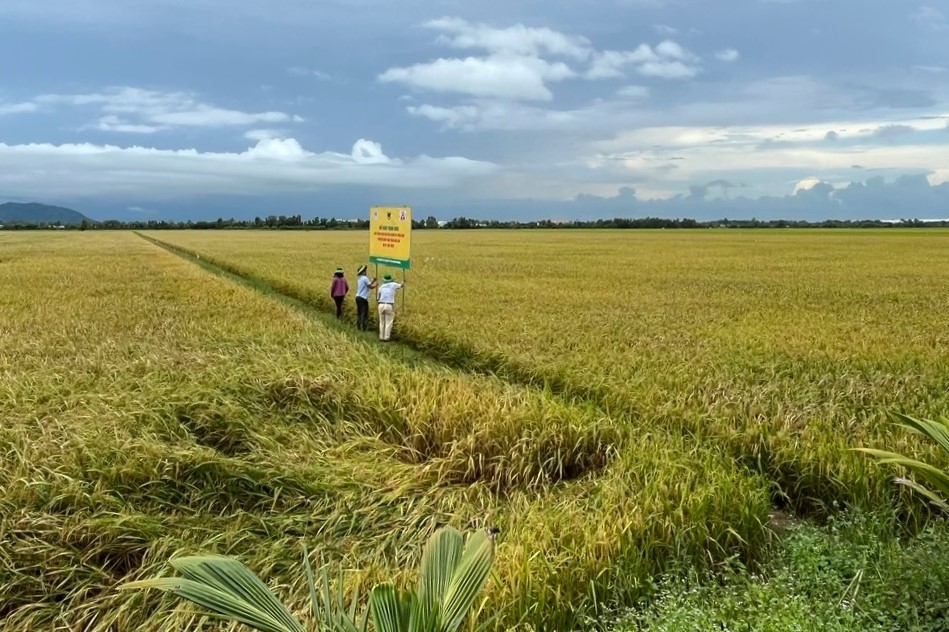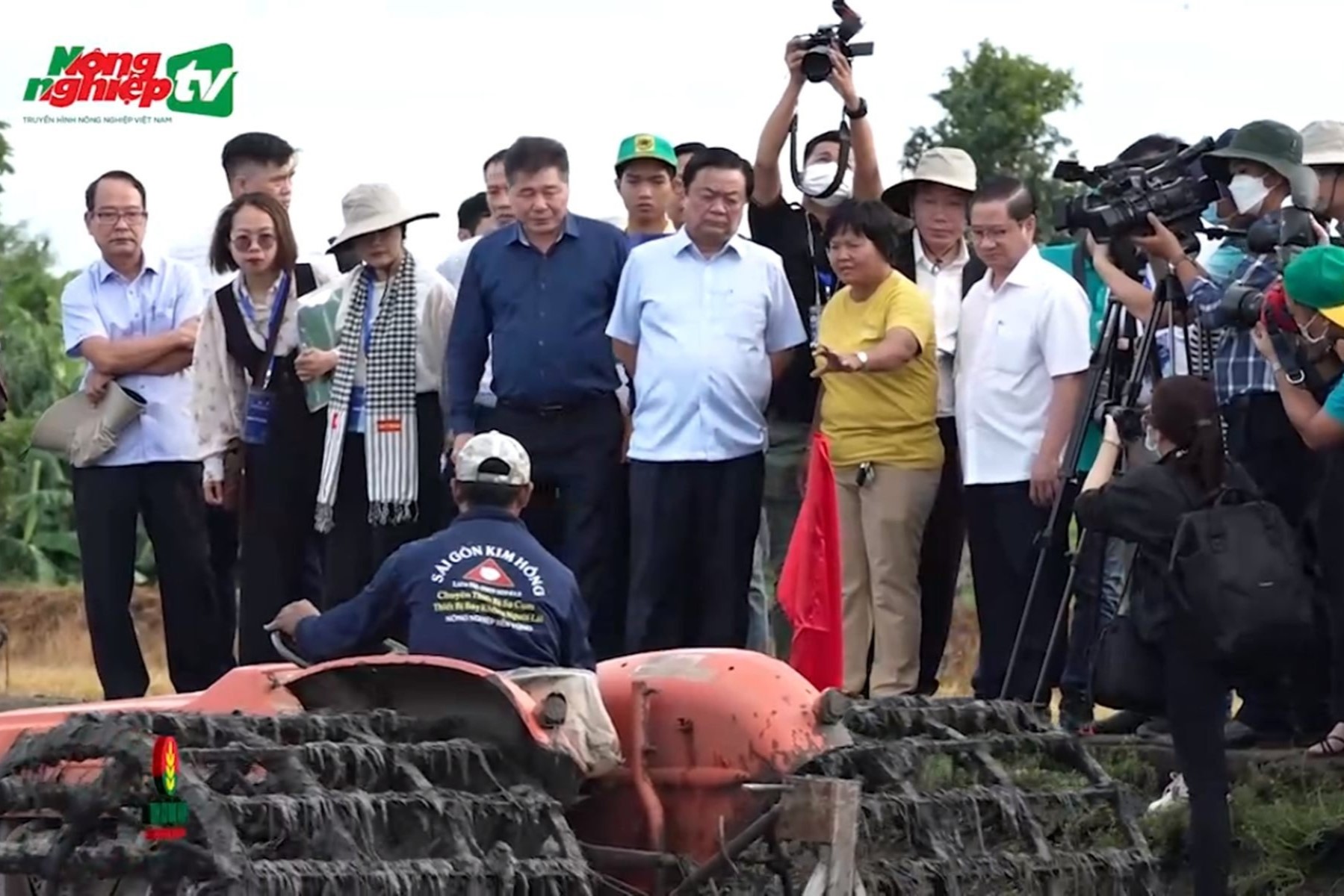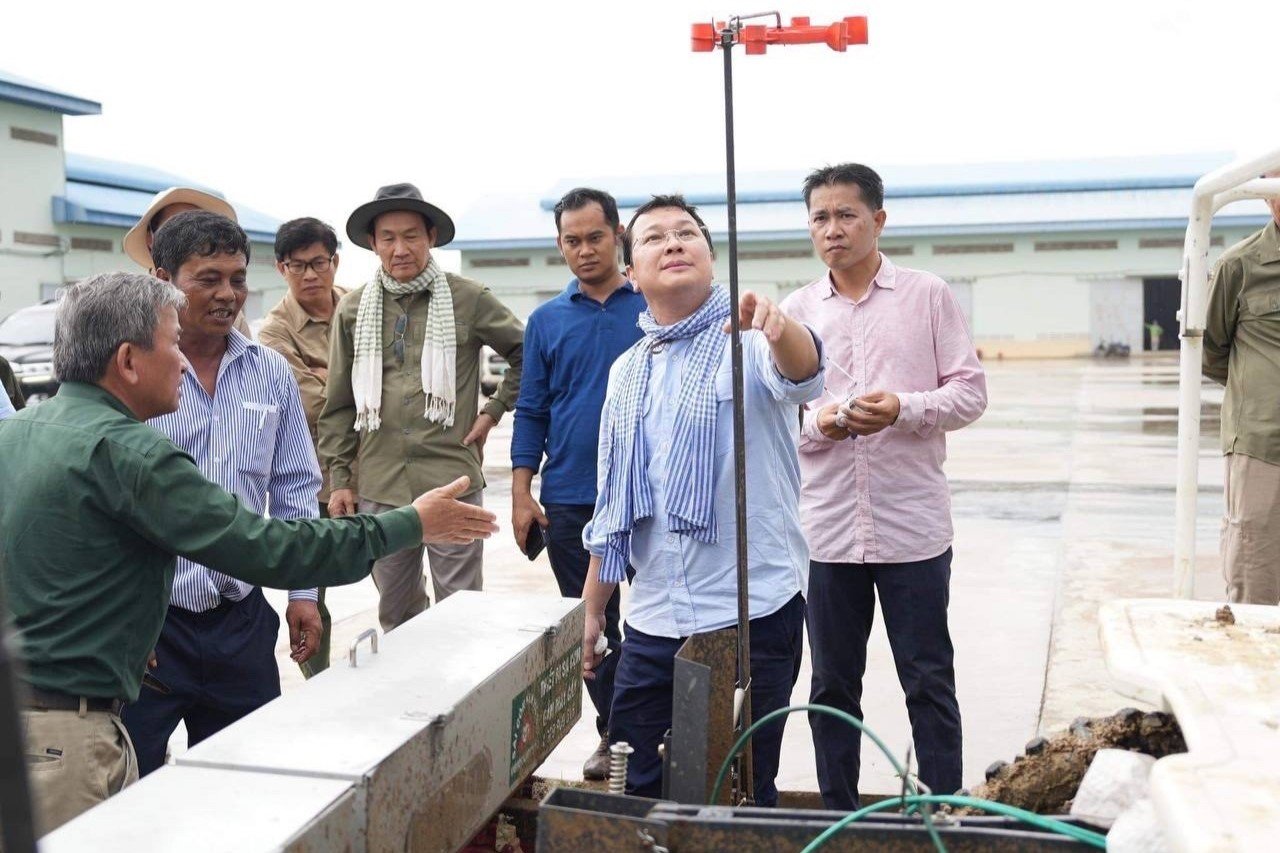May 22, 2025 | 09:55 GMT +7
May 22, 2025 | 09:55 GMT +7
Hotline: 0913.378.918
May 22, 2025 | 09:55 GMT +7
Hotline: 0913.378.918

Effective in the field, combining cluster sowing with fertilizer burying.
Cluster sowing, also known as position sowing or seed transplanting, is a seeding solution that is receiving attention from farmers across the country, especially in the Mekong Delta region, due to its superior efficiency.
Cluster sown fields only use the minimum amount of seed (40–60 kg/ha), thereby helping to reduce the amount of fertilizers and pesticides used, emissions, environmental pollution, and falls, and at the same time, increase productivity, quality, and economic efficiency of rice production.
Moreover, if cluster sowing is combined with the solution of burying fertilizer at the same time as sowing, the advantages of cluster sowing will be more thoroughly exploited while adding the following advantages:

The meeting commented on the draft technical process for mechanizing precise sowing and reducing greenhouse gas emissions in rice production in the Mekong Delta.
With the above advantages, the solution of burying fertilizer can help reduce the amount of fertilizer by 20–30% compared to the process of fertilizer spreading on the field that has been done for a long time.
Saigon Kim Hong has coordinated with fertilizer businesses and localities to deploy the cluster sowing-fertilizer burying model in some localities in the Mekong Delta from the 2021–2022 winter–spring crop to the 2023 summer–autumn crop. The model’s actual results have affirmed the superior advantages of cluster sowing-fertilizer burying solution. Specifically, as follows:
1. Model site at Vinh Thanh Trung - Chau Phu - An Giang in the 2021–2022 winter–spring crop
The model used Dau Trau growth-promoting fertilizer and Dau Trau grain-firming fertilizer from Binh Dien Fertilizer JSC (Dau Trau fertilizer), with the following results:

Leaders of the Ministry of Agriculture and Rural Development and delegates visit the cluster sowing machine at the Agritechnica live event in 2022.
2. Model site in 6 districts: Chau Phu, Chau Thanh, Cho Moi, Phu Tan, Thoai Son, and Tan Chau-An Giang in the 2023 summer-autumn crop.
The buried fertilizer used in the model is NPK fertilizer, produced and distributed by Binh Dien II Fertilizer Production and Trading JSC (2 Phong fertilizer). The fertilizer includes two preparations: (1) "green rice" preparation used as fertilizer to promote tillering with a recommended amount of 240–260 kg/ha; and (2) "firm grain" preparation used as fertilizer to stimulate young rice with a recommended amount of 80–120 kg/ha.
The model gives truly remarkable results, as follows:

The Cambodian Minister of Agriculture, Forestry, and Fisheries, Dith Tina, referred to the cluster sowing machine.
3. Model site at Tri Ton - An Giang in the 2023 summer-autumn crop
The model used Dau Trau growth-promoting fertilizer and Dau Trau grain-firming fertilizer from Binh Dien Fertilizer JSC (Dau Trau fertilizer), with the following results:
The above actual results show that the cluster sowing model, especially cluster sowing combined with fertilizer burying, brought truly remarkable results.
Thereby, it can also be affirmed that cluster sowing has much more advantages than manual sowing. At the same time, if cluster sowing is combined with fertilizer burying at the same time as sowing, the above-mentioned advantages will be thoroughly exploited and bring superior results to other forms of seeding. Therefore, it can be said that cluster sowing combined with fertilizer burying is the "perfect couple" in rice cultivation.
Dr. Bui Ba Bong, former Deputy Minister of Agriculture and Rural Development:
"As for rice cultivation, the current limitation is the low rate of mechanization application in the sowing stage. Looking back a few years ago, at that time the transplanter was considered very good, but when implementing it, the cost was still high, and the stages of making seedlings and growing media encountered difficulty. Up to now, the solution of cluster sowing by machines is feasible, and if it can cover the fields in the next five years, it will be a huge development step."
Translated by Huyen Vu Thu
![Reducing emissions from rice fields: [2] Farmers’ commitment to the soil](https://t.ex-cdn.com/nongnghiepmoitruong.vn/608w/files/news/2025/05/05/dsc08881jpg-nongnghiep-140632.jpg)
(VAN) Clean rice cultivation model in Thuong Tan commune, Bac Tan Uyen district, is assisting local residents in achieving sustainable agriculture by substantially reducing costs, increasing productivity, and protecting the environment.

(VAN) At the conference to disseminate Resolution No. 68, AgriS introduced its digital agricultural ecosystem and reaffirmed its commitment to accompanying the Government in promoting private sector development and sustainable agriculture.

(VAN) 'Blue Ocean - Blue Foods' initiative is designed to restore marine ecosystems and establish sustainable livelihoods for local communities by cultivating a minimum of 1,000 hectares of cottonii seaweed in the first three years.
/2025/05/21/4642-3-112707_603.jpg)
(VAN) The V-SCOPE project has made direct contributions to three out of six pillars of the Comprehensive Strategic Partnership between Vietnam and Australia.

(VAN) Facing the threat of rabies spreading to the community, Gia Lai province urgently carries out measures to vaccinate dogs and cats on a large scale.

(VAN) Disease-free livestock farming not only protects livestock herds but also stabilizes production and livelihoods for many farmers in Tuyen Quang.

(VAN) Japan's grant aid project contributes to capacity building, promoting organic agricultural production, and fostering sustainable community development in Dong Thap province.